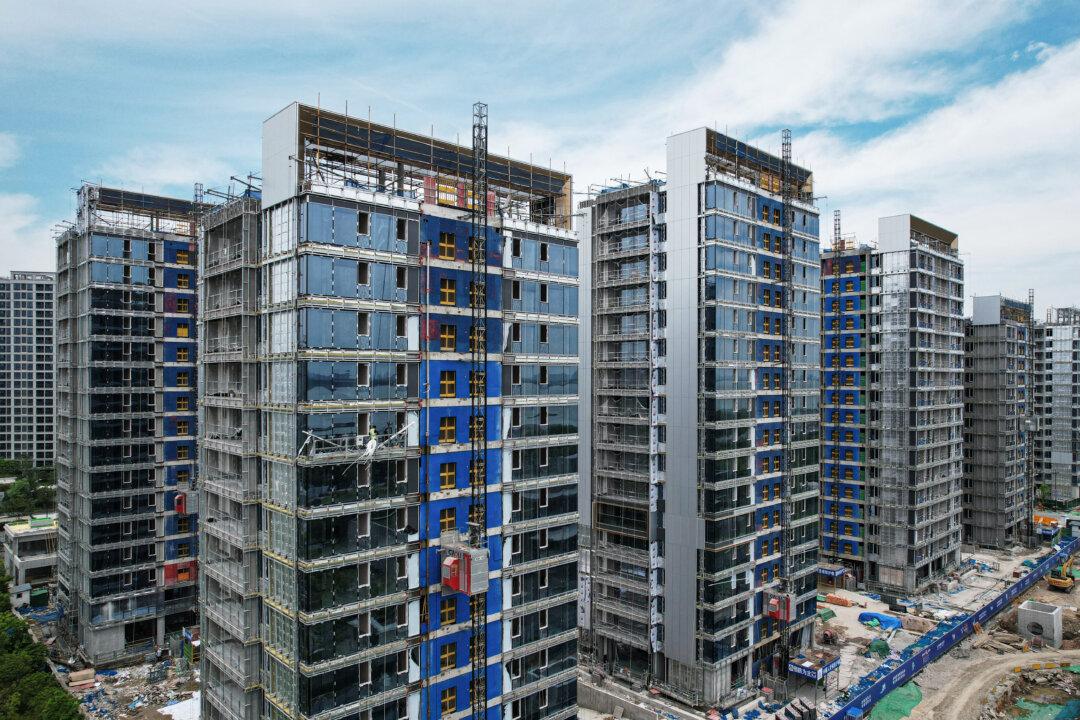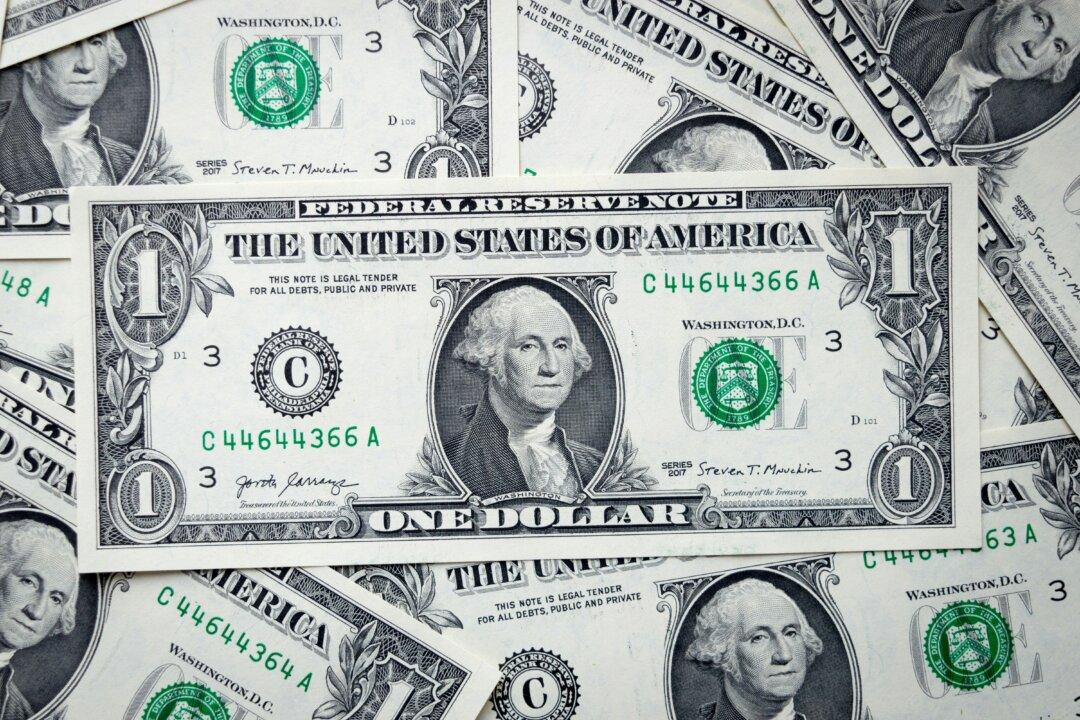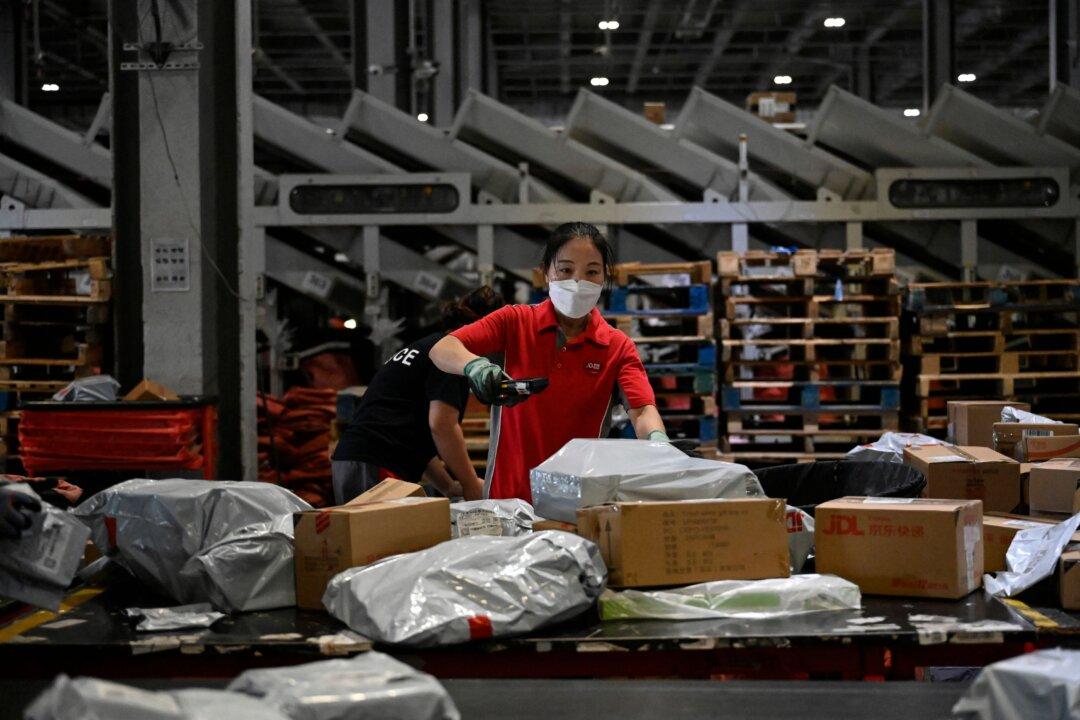The People’s Bank of China (PBOC) held the medium-term policy rate steady on Monday, relying on market expectations for a cut needed to shore up China’s shaky post-pandemic economic recovery.
Analysts were disappointed to see the nation’s central bank retain the rate on its one-year policy loans—called the medium-term lending facility (MLF)—at 2.5 percent, as they had anticipated the first cut since August of at least 0.1 percent, according to a Bloomberg poll of 18 economists.
“Weak sentiment with regards to economic data has caused the market to anticipate greater support measures to counteract this, but we believe policymakers are continuing to hold off while waiting for signs of a pick-up during Chinese New Year,” according to a note by the UK-based Everbright Securities viewed by The Epoch Times.
Of 35 market players surveyed by Reuters this week, over 50 percent anticipated that the PBOC would lower the interest rate on medium-term lending facility loans within one year.
While December saw an uptick in exports, the country’s credit growth was poor, and deflationary pressures were persistent, so additional stimulus measures were needed, reports suggested.
Data on Friday also unveiled China’s lengthiest period of deflation since 2009, along with disappointing credit and loan growth, according to Bloomberg.
Expectations were also led by large Chinese commercial banks’ move at the end of last year to cut their deposit rates.
PBOC also had less wiggle room due to a weaker yuan and a contracting interest rate margin at commercial banks, said analysts.
“The main factor holding the PBOC back was probably lingering concerns about the renminbi [yuan],” noted Capital Economics in a reaction communique to its clients viewed by The Epoch Times.
The note added that the PBOC is probably keen on avoiding renewed depreciation pressure on the weakening yuan.
A large interest-rate differential between China and the United States has intensified capital outflow from yuan-denominated assets, according to analysts, since the U.S. Federal Reserve began raising its benchmark rate in March last year.
As a result, the yuan has lost about 6 percent against the dollar in 2023 and may remain suppressed through next year. In the backdrop of uncertainties around interest rate reductions by the U.S. Federal Reserve, the Chinese currency has already depreciated against the dollar by over 1 percent so far this year, reaching a level not seen in over a month.
The rate cut by the PBOC saw the onshore yuan plummet to a one-month low of 7.18 per dollar, while the offshore fell as far as 7.19 per dollar, hovering near Friday’s one-month low.
With key economic gauges remaining weak, the central bank is under pressure to support the yuan currency amid Beijing’s underwhelming measures to stabilize the currency, according to analysts.
Likewise, Chinese stocks finished mixed and muted on Monday due to the central bank’s surprising move amid calls for policy easing to aid economic recovery.
New Year Push
Meanwhile, to maintain the easy availability of cash in the economy ahead of the Chinese New Year in February, the PBOC also injected money into the banking system through reverse repos and the MLF.A reverse repo is a transaction in which the central bank purchases securities from commercial banks through bidding with the intention of selling them later.
The central bank conducted seven-day reverse repos for 89 billion yuan (about $12.52 billion) at a 1.8 percent interest rate. A total of 995 billion yuan was also poured into the market via the MLF, which would mature in one year at the same 2.5 percent interest rate as the previous operation.
Slowdown Ahead
Still, in light of deflationary pressures and a severe property collapse, a Reuters poll predicted that China’s economic growth would fall to 4.6 percent in 2024 and even lower to 4.5 percent in 2025, adding additional pressure on Beijing to implement stimulus measures.The median predictions of 58 analysts surveyed by Reuters indicate that GDP expanded by 5.2 percent in 2023, which aligns with the government’s yearly growth objective. This was partly helped by the low-base impact of the previous year, which was defined by COVID-19 lockdowns.
But the real estate sector’s woes in 2024 will significantly impact China’s economic forecast for the year. The government’s goal is to address the oversupply in the industry, which has grown over the past few years, and bring supply in line with actual demand. However, this could cause the slowdown to persist beyond 2024.







